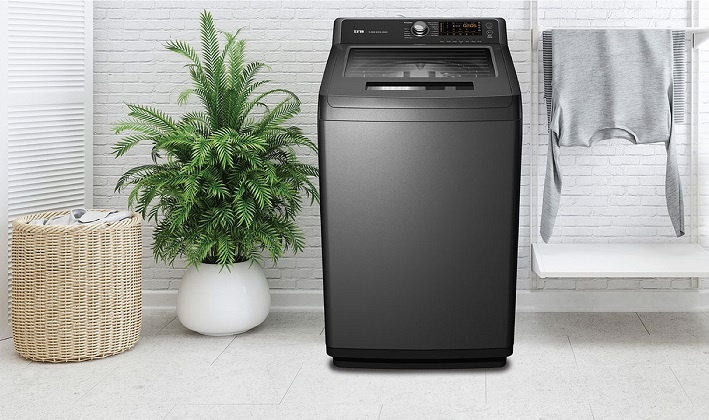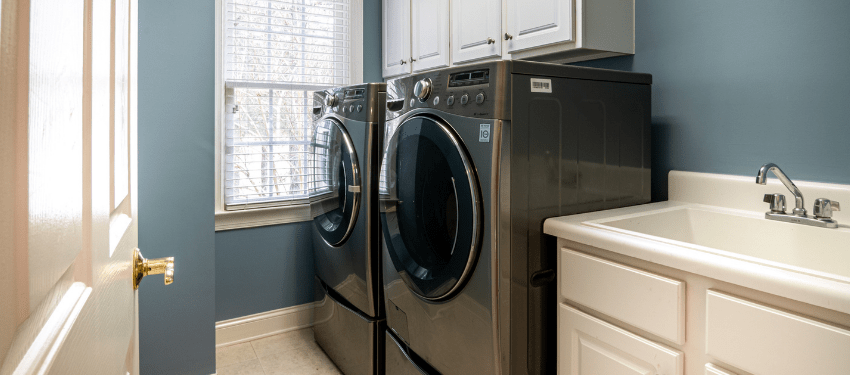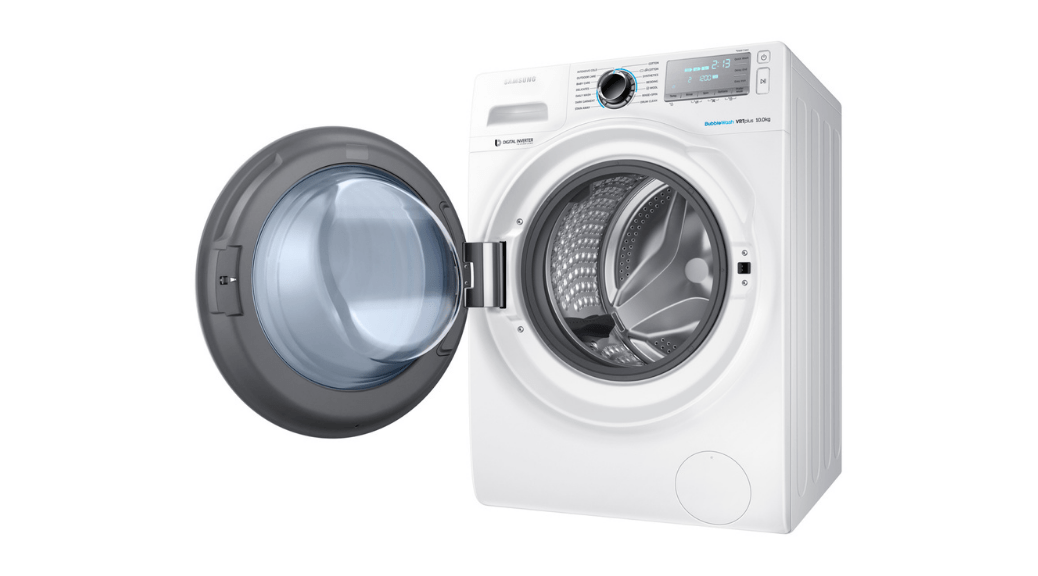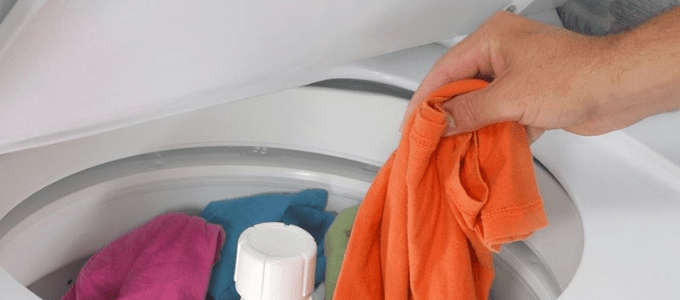Indian markets are full of various brands and large number of models focusing on minor differences mainly in aesthetics, design, appearance, colour,...

Automatic Top Loading Washing Machine
Indian markets are full of various brands and large number of models focusing on minor differences mainly in aesthetics, design, appearance, colour, size, etc. There are around 500 models of washing machines of various brands available in the market and it is very difficult to choose a good washing machine out of the huge variety of brands & models. The wide range of semi-automatic and fully automatic – top as well as front-loading machines are available. You can buy a washing machine for as low as Rs 6000 and as high as Rs 80,000. You need to ensure that it meets your requirements and make sure that you are getting value for money.
Nowadays, a washing machine even in any middle class family is a necessity along with other electrical household items. It is a big help for a household with many members because it saves huge amount of time over hand washing. We can load our clothes, start the cycle depending on our garments and wait for completion of soaking, washing, rinsing & spinning and get dried clothes. We can also use heavy cycles for larger/cotton loads or heavily soiled items. We don’t have to sit and monitor the washing process of automatic washing machine.
Types of Washing Machine: Automatic and Semi-Automatic
There are two main washing machine types: automatic and semi-automatic. Currently, front-load washing machines are contributing 30 percent to the business. The top-load is around 35 percent and the semi-automatic washing machine is 30–35 percent. Automatic machines do everything themselves. After you choose the wash programme, the machine will fill itself and go through the soak, wash, rinse and spin cycle then drain the water by removing all the excess moisture – all in the same drum. The other type of washing machine is a semi-automatic model, which needs to be filled with water before the wash begins (and then drained and filled again for the rinse cycle). You will also have to transfer your clothes from the wash drum to the spin drum. In this way, you have more control over the washing process, but it also is more labour intensive. These machines also tend to have fewer special features and cycles than automatic washing machines, but also tend to be more affordable.
Despite the top-loading machines being more prices competitive, higher energy-efficiency in front-loading washing machines brings down the consumption of water and electricity significantly, as compared to top-loading ones.
Capacity: Home-use washing machines in India have a range of 5 kg to 12 kg. For a family of two or those living alone, a 5 kg machine is more than sufficient, however, a bigger family will need a bigger capacity machine. Even a family of four, especially with small children will require a high-capacity washing machine as children go through several pairs of clothing in a single day.
Selection: During purchase of washing machine, one has to be very careful about selection of the latest model because in many cases it has been observed that when the machine gets out of order, the spare parts of the model are not available because a new model had already replaced the earlier model. Another important criteria for selecting the right washing machine is its energy efficiency and less consumption of water. Fully automatic washing machine uses around 100 to 150 litres of water for full rated load. In semi-automatic, it depends from individual to individual because rinse drum is different.
Some of the brands claim 6th sense technology that adjusts water level, wash timings and detergent doses based on fabric type and load, others claim hot wash technology with an inbuilt heater which not only removes tough stains but also eliminates dangerous bacteria from the clothes and protects from skin diseases. Other features are digital display, rat mesh, child lock, fuzzy logic, easy to use control panel, magic lint filter, automatic tub cleaning, express wash, delay start and auto restart.
Brands: LG, Samsung, IFB, Whirlpool, Haier, and Godrej remain the leading brands, with LG and Samsung cornering a combined share of 50 percent. Other popular brands include Bosch, Croma, Panasonic, and Lloyd.
Top loading/ Front loading: Front-load washing machines and top-load washing machines have the same job to wash your laundry but there are quite a few differences between the two styles. Your choice might be personal preference. If you have continuous water supply(Hot & Normal), prefer going for the Front Loading models as they have better washing performance, energy & water efficient but 10-20 % costlier, still worth considering. Avoid going for the machines loaded with complex features, selections as it complicate the washing. 4-6 selections are adequate for satisfactory washing. For better cleaning of heavily soiled clothes, use soak mode during pre-wash. Top loading machines are less costly than front loading machines and easy to move.
If you want to conserve water and electricity, front loaders use way less (more than half) water than traditional top loaders, which have to fill up entirely for the wash and rinse cycles. Opt for an Energy Star model, which reduces electricity and water use by about 20% and 35%, respectively, over non-rated models. The best front-loaders clean better and are gentler than the top-loading washing machines while using less water. Front-loaders take longer than top-loaders, but spin faster, extracting more water and trimming dryer time.
Energy Labelling: Washing machines now carry the Energy Label based on the key performance parameters i.e. Washing Efficiency, Water consumption and Energy Consumption, etc. However energy labelling programme of Bureau of Energy Efficiency is voluntary at present to become mandatory in the coming time. Manufacturers declare the motor rating in watts, however actual energy consumption will also depend on wash load. Water consumption is not declared which is very important for washing machines which have taken care in the Energy labelling program of BEE.
Advantages of Top-loading Washing Machine
- A top loading machine is cheaper to buy – a mid-range top loader will cost less than a mid-range front loader.
- The drum door is located on the top of the machine, so you don’t need to worry about the extra space that is needed to open a front loading machine.
- The design of top loading machines is simple and easy for first-time users to understand. There are fewer mechanical parts to get damaged or malfunction. However, at the same time, top loading machines are becoming a lot more sophisticated and the latest models come with a full range of wash programs and built-in extras.
- The machines are quieter because drum doesn’t usually spin fast in a top loader.
Disadvantages of Top-loading Washing Machine
- A top-loading machine uses more water than a front-loading machine and is less efficient in washing & spin extraction. The top-loading drum must be completely filled with water during the wash cycles. This will lead to a larger household water bill.
- Top-loading washing machines tend to have fewer features and functions – if these are important to you, then take that into consideration.
Mistakes You Make
Read instructions manual thoroughly while operating for better results. Making these mistakes can waste time and energy, compromise cleaning, and damage your garments.
- Overloading your machine
Today’s washing machines are bigger than ever and it’s tempting to cram in “just one more” thing — but don’t. Even large-capacity machines have their limits. When they’re too full, water and detergent won’t reach everything, dirt gets trapped, and clothing doesn’t get clean. Plus, overloading causes unnecessary wear on your washer, and excess fabric wrinkling.
- How much detergent to use
To get the best clean, it’s important to follow your detergent’s directions and measure it. Forgo measuring and you decrease cleaning performance, whether you add too little or too much. It is okay to use a bit more for very dirty loads, or if you’re washing in hard water.
- Sticking to the same cycles and settings
One cycle just doesn’t fit all. You probably use the “Regular” or “Delicate” cycles most often, but other settings and options are worth exploring too. They offer extra rinses for bulky items, hotter water for better stain removal and whitening, and even slower agitation for less wrinkling.
- Forgetting to flush out the dispensers
The fabric softener, detergent, or both dispensers in your machine need to be cleaned. Rinse them frequently, take them out, and after the cycle is over, keep the detergent drawer open to let any remaining water evaporation occur (otherwise, it could cause odours).
Energy saving tips:
- Washing machines can account for as much as 20% of the electricity you use.
- Use cold water, as almost 90% of the energy consumed by washing machines goes to heating the water. Set the washing machine temperature to cold or warm and the rinse temperature to cold as often as possible.
- Each cycle uses up to 60 to 120 litres of water. Use washing machine on full load and plan washing periodicity to save on water too.
- Adding too much detergent actually hampers effective washing action and may require more energy in the form of extra rinses.
- Wash only full loads of clothing-but do not overload machine. Sort laundry and schedule washes so that a complete job can be done with a few cycles of the machine carrying its full capacity, rather than a greater number of cycles with light loads.
- Soak or pre-wash the cloths for effective cleaning.
- Pre-rinse the clothes before main wash in plain water, as 60% of dirt can be dissolved. Hence the detergent will be more effective on removing the balance dirt.
Features to Consider while Buying
1) Material of the drum/tub
The tub can be made of plastic or stainless steel. Stainless steel tubs are the best as they are the most durable and can withstand high spin speeds.
2) Wash settings
Most machines have pre-set wash programmes, such as ‘gentle wash’ for delicate clothes, and water level options. You can customise and save favourite settings. These can be adjusted through rotary controls, a touchpad or a touch screen. The first type is the cheapest.
3) Temperature control
If the washer has an in-built heater, this feature will help adjust the temperature of the water. This can prove useful in winter. Besides, hot water cleans clothes better. Some of the machines have steam setting, which helps fight dirt and stains well.
4) Time delay & pre-soak
Time delay allows you to load the washing machine
Important Features
- Auto Restart: This feature restarts the machine from the point when the cycle was interrupted.
- Automatic Drainage: This feature is quite common in automatic machines and not so common in semi-automatic machines.
- Child Lock: To avoid miss-happenings or hassles with the working of washing machine in the presence of children at home, this feature is of great help.
- Hot Water Wash: High-end washing machines come with the hot wash option.
- Wash Load Sensor: We may find that our machine hops and shakes at times due to an imbalance of the load inside.
- Plastic Tub or Steel Tub: The top end models have stainless steel tubs. Plastic tubs are also an option that will last the life of the machine.
Energy and Water Saving: It’s always good to look for machines, which can help us save water and energy.
Therefore, relying on the aforementioned advice, one can undoubtedly find the washing machine that is best suited to their needs. These suggestions will not only help him/her clear up any lingering questions regarding the item, but will also make it a top pick.
We conducted market research on a few of the most popular automated top-loading washing machine models from well-known companies that are ideal for average families (6.0–8.0 kg capacity), in order to assist consumers in making well-informed decisions before purchasing a washing machine.
Top loading fully automatic washing machines (6.0 kg to 8.0 kg capacity):
| S No | Brand | Model | Capacity, kg | MRP,Rs. | Drum Type | Net Weight, Kg | Annual Energy consumption, | Star rating |
Warrantee, yrs (Product+ Motor) |
Wash Programs |
| 1 | Godrej | WTEON 600 AD 5.0 ROGR | 6.0 | 13690 | Steel | 29.5 | 0.012 kwh/kg/cycle | 5 | 2+10 | 9 |
| 2 | Panasonic | NA-F60LF1HRB | 6.0 | 13990 | Steel | 29 | 360 Watts | 5 | 2+10 | 8 |
| 3 | Godrej | WT EON 620A Gp Gr | 6.2 | 12700 | Acu Wash Drum | 360 Watts | nil | 2+10 | 5 | |
| 4 | Samsung |
WA65A4002VS
|
6.5 | 14590 | Diamond Drum | 29.5 | nil | 2+2 | 6 | |
| 5 | LG | T65SKSF4Z | 6.5 | 16490 | Stainless-Steel | 32 | 5 | 2+10 | ||
| 6 | Samsung | WA65T4262GG | 6.5 | 15950 | Steel | 30 | 200kwh/yr | 5 | 2+10 | |
| 7 | IFB | TL-RSS 6.5KG AQUA | 6.5 | 18590 | Stainless Steel | 35 | 5 | 4+10 | 6 | |
| 8 | Bosch | WOE651D0IN | 6.5 | 18490 | 36.7 | 200kwh/yr | 5 | 2+10 | 8 | |
| 9 | whirlpool | WHITEMAGIC ROYAL | 6.5 | 14700 | 27 | 360 Watts | 5 | 2+5 | 12 | |
| 10 | IFB | TL-REW 6.5KG AQUA | 6.5 | 16890 | Stainless-Steel | 35 | 5 | 4+10 | 8 | |
| 11 | Whirlpool | STAINWASH ULTRA | 6.5 | 18890 | Stainless Steel | 31 | 5 | 2+10 | 12 | |
| 12 | whirlpool | WHITEMAGIC ROYAL PLUS | 7.0 | 16970 | Stainless-Steel | 30 | 200kwh/yr | 5 | 12 | |
| 13 | LG | T70SJMB1Z | 7.0 | 23490 | Stainless-Steel | 33 | 200kwh/yr | 5 | 2+10 | |
| 14 | LG |
T75SKSF1Z
|
7.0 | 19840 | Stainless Steel | 32 | 5 | 2+10 | 8 | |
| 15 | LG | T70SJSF3Z | 7.0 | 23590 | Steel | 31.5 | 5 | 2+10 | ||
| 16 | Panasonic | F75AH9RRB | 7.5 | 25690 | Steel | 32 | 113 kwh/yr | 5 | 2+12 | 10 |
| 17 | whirlpool | WHITEMAGIC ROYAL PLUS | 7.5 | 17750 | Stainless-Steel | 30 | 360 Watts | 5 | 12 | |
| 18 | LG | T80SJMB1Z | 8.0 | 23980 | Stainless Steel | 33 | 200kwh/yr | 5 | 2+10 | |
| 19 | IFB | TL-SDG | 8.0 | 28950 | Stainless Steel | 53 | 4+4 | 12 | ||
| 20 | LG | T80SJFS1Z | 8.0 | 24250 | Stainless Steel | 38.7 | 5 | 2+10 |
Note: Please check latest prices at amazon.in or firtkart.com as these may vary with time to time.
Tips for Improving Wash Quality
Given below are few tips that will help you get better results from your washing machine, as well as keep the clothes & washing machine in good condition for a long time.
- Do not overload the washer.
- Select appropriate water level as per the load.
- Sort your clothes before wash.
- Wash whites separately from colours.
- Wash less soiled cloths separately from heavily soiled.
- Separate lint givers from lint takers.
- Make sure that all pockets are empty of coins, pins, etc.
- Turn garments made of lint taker fabric inside out before washing.
- Do not allow wet clothes to remain in the washer for a long period.
- Clean the lint filter regularly.
- Wipe your washer clean after every wash.
- Keep the washer’s lid open for some time after the wash to avoid smell & fungus.
Automatic Top Loading Washing Machine
Automatic Front-Loading Washing Machines: Go for the best!
Washing machines are a big deal in most households, making it easy to wash everyone’s clothes. They’re used several times a week, so it’s important...
Consumer VOICE survey on top loading washing machines
Washing machines, whether top-loading or front-loading, are all about utility and convenience. But that’s not all. Then one would pick up any...






